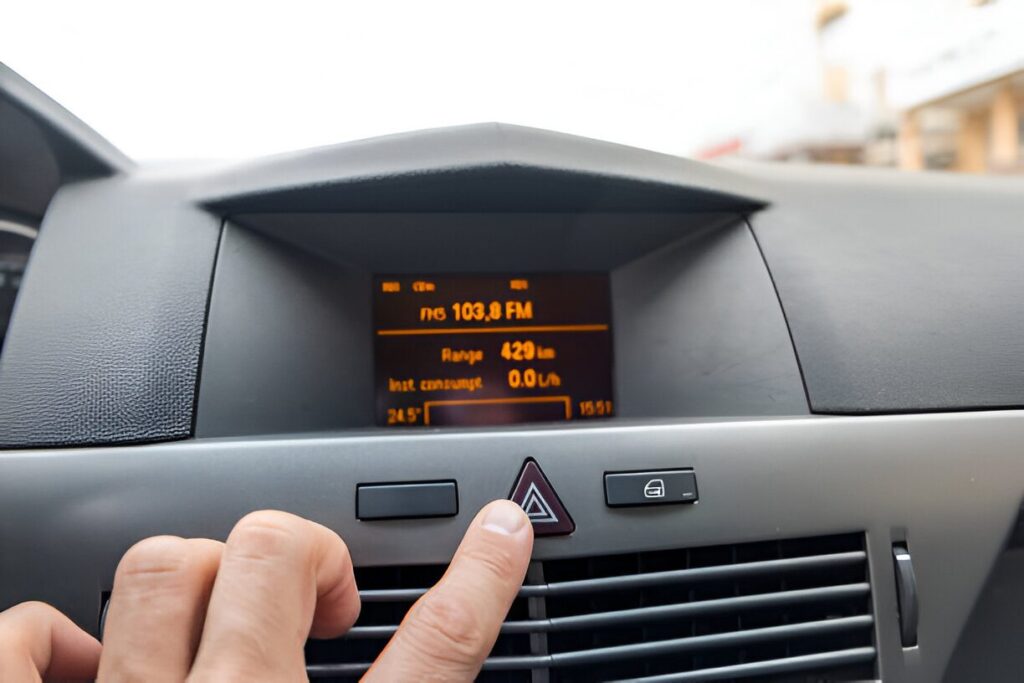Car air conditioning isn’t just a luxury; it’s a necessity for your comfort and safety when driving in the car, especially if you live in a warm climate.
Buckle up as we dive into the cool world of car air conditioning systems.
The Quick Answer: How Car AC Systems Work
In simple terms, your car’s air conditioning system works by removing heat and humidity from the air inside your vehicle and replacing it with cooler, drier air.
This magic happens through a process called the refrigeration cycle, which involves circulating a special fluid called refrigerant through a closed system of components.
As the refrigerant changes state between liquid and gas, it absorbs and releases heat, effectively cooling the air that enters your car’s cabin.
The Key Components of Car Air Conditioning
Let’s introduce the main players in this cooling adventure:
Compressor
What It Does: Pumps and pressurizes the refrigerant, starting the cooling cycle.
Fun Fact: It’s powered by your car’s engine via a belt, making it the hardworking heart of the operation.
Condenser
What It Does: Releases heat from the refrigerant into the outside air, turning hot gas into a cooler liquid.
Location: Usually found at the front of the car, near the radiator, enjoying the breeze as you drive.
Receiver/Drier (or Accumulator)
What It Does: Removes moisture and contaminants from the refrigerant to protect the system.
Importance: Keeps everything running smoothly by ensuring the refrigerant is clean and dry.
Expansion Valve (or Orifice Tube)
What It Does: Controls the flow and pressure of the refrigerant into the evaporator.
Role: Drops the refrigerant’s pressure and temperature, prepping it for maximum heat absorption.
Evaporator
What It Does: Absorbs heat from the air inside the car, allowing cool air to blow through the vents.
Location: Hidden inside your dashboard, working tirelessly behind the scenes.
The Step-by-Step Refrigeration Cycle
Let’s walk through the journey of the refrigerant as it cools your car:
1. Compression
The compressor squeezes the refrigerant gas, increasing its pressure and temperature.
2. Condensation:
The hot, high-pressure gas moves to the condenser, where it releases heat to the outside air and condenses into a high-pressure liquid.
3. Purification:
The liquid passes through the receiver/drier, which removes any moisture and impurities.
4. Expansion:
The clean, high-pressure liquid flows through the expansion valve, dropping in pressure and temperature rapidly.
5. Evaporation:
The cold, low-pressure liquid enters the evaporator, absorbing heat from the car’s interior air as it evaporates back into a gas.
This is where the magic happens, turning warm cabin air into a refreshing breeze!
5. Cycle Repeats:
The now warm, low-pressure gas returns to the compressor, and the entire process starts again.
A continuous loop dedicated to your comfort.
Typical Automotive AC Issues
Here’s what can potentially go wrong with your car’s AC:
Refrigerant Leaks
- Symptoms: Weak cooling, hissing sounds.
- Causes: Worn seals, damaged hoses, or loose connections.
- Solution: Locate and repair leaks, then recharge the refrigerant levels. In the majority of cases, you’ll need to visit a professional for a car air con re-gas service to restore your vehicle’s air conditioning.
Faulty Compressor
- Symptoms: No cool air, strange noises when AC is on.
- Causes: Electrical issues, lack of lubrication, or general wear and tear.
- Solution: Repair or replace the compressor.
Clogged Condenser
- Symptoms: Reduced cooling efficiency.
- Causes: Debris buildup blocking airflow.
- Solution: Clean or replace the condenser.
Malfunctioning Expansion Valve
- Symptoms: Inconsistent temperatures, frost on vents.
- Causes: Blockages or mechanical failures.
- Solution: Replace the expansion valve.
Dirty Evaporator
- Symptoms: Musty smells, reduced airflow.
- Causes: Mold and bacteria buildup.
- Solution: Clean the evaporator and replace cabin air filters.
Regular maintenance can help you dodge these issues and keep your cool all year round.
Simple Maintenance Tips
Here’s how you can help your car’s AC system stay in top shape:
Run the AC Regularly
To keep your car’s air conditioning in good shape, run it regularly, even in winter. Just turning it on for a few minutes each week helps keep the system lubricated and stops the seals from drying out.
Replace Cabin Air Filters
It’s important to change your cabin air filters regularly. Clean filters help the airflow better and keep the system from working too hard. Check and replace them every 12,000 to 15,000 miles, or as your car’s manual suggests. This will help keep the air inside your car fresh and your AC running smoothly.
Keep the Condenser Clean
The condenser is key to keeping your car cool, but it can get clogged with dirt and debris. To keep it working well, check the front grill area often and clear out any buildup. A clean condenser means your AC can cool the air more effectively.
Schedule Regular Inspections
Having your car’s AC system checked regularly is a smart move. Get it looked at once a year, especially before the hot weather hits. This way, you can catch any problems early and avoid bigger issues later.
Use the Recirculation Mode
Using the recirculation mode on your AC can help cool your car faster and take some pressure off the system. Once the initial hot air is gone, switch to recirculation mode to keep the cabin cool more efficiently. This trick is especially handy on really hot days.
These easy steps can help ensure that your AC system remains as reliable as your favourite road trip playlist on Spotify or Apple Music.
Now You Can Stay Cool on the Road
Knowing how your car’s air conditioning works isn’t just a neat party trick—it empowers you to recognize potential issues early and communicate effectively with mechanics.
This understanding ensures that you can maintain a comfortable and safe driving environment, no matter how high the temperature climbs outside.
Stay cool and drive safe!


